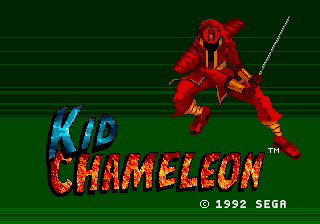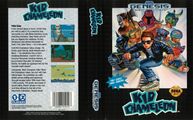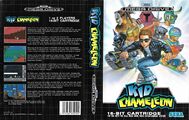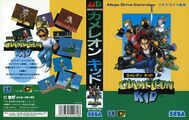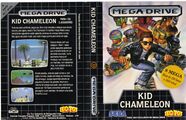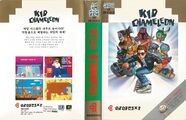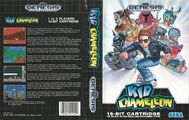Difference between revisions of "Kid Chameleon"
From Sega Retro
| Line 525: | Line 525: | ||
==References== | ==References== | ||
<references/> | <references/> | ||
| + | {{KidChameleonOmni}} | ||
[[Category:Sega Channel games]] | [[Category:Sega Channel games]] | ||
[[Category:Mega-Tech games]] | [[Category:Mega-Tech games]] | ||
Revision as of 16:39, 21 December 2019
| Kid Chameleon | ||||||||||||||||||||||||||||||||||||||||||||||||||||||||||||||||||||||||||||||||||||||||||||||||||||||||||||||||||||||||||||||||||||||||||||||||||||||||||
|---|---|---|---|---|---|---|---|---|---|---|---|---|---|---|---|---|---|---|---|---|---|---|---|---|---|---|---|---|---|---|---|---|---|---|---|---|---|---|---|---|---|---|---|---|---|---|---|---|---|---|---|---|---|---|---|---|---|---|---|---|---|---|---|---|---|---|---|---|---|---|---|---|---|---|---|---|---|---|---|---|---|---|---|---|---|---|---|---|---|---|---|---|---|---|---|---|---|---|---|---|---|---|---|---|---|---|---|---|---|---|---|---|---|---|---|---|---|---|---|---|---|---|---|---|---|---|---|---|---|---|---|---|---|---|---|---|---|---|---|---|---|---|---|---|---|---|---|---|---|---|---|---|---|---|
| System(s): Sega Mega Drive, Virtual Console, Steam, iOS, Android | ||||||||||||||||||||||||||||||||||||||||||||||||||||||||||||||||||||||||||||||||||||||||||||||||||||||||||||||||||||||||||||||||||||||||||||||||||||||||||
| Publisher: Sega | ||||||||||||||||||||||||||||||||||||||||||||||||||||||||||||||||||||||||||||||||||||||||||||||||||||||||||||||||||||||||||||||||||||||||||||||||||||||||||
| Developer: Sega Technical Institute | ||||||||||||||||||||||||||||||||||||||||||||||||||||||||||||||||||||||||||||||||||||||||||||||||||||||||||||||||||||||||||||||||||||||||||||||||||||||||||
| Sound driver: GEMS | ||||||||||||||||||||||||||||||||||||||||||||||||||||||||||||||||||||||||||||||||||||||||||||||||||||||||||||||||||||||||||||||||||||||||||||||||||||||||||
| Genre: Action | ||||||||||||||||||||||||||||||||||||||||||||||||||||||||||||||||||||||||||||||||||||||||||||||||||||||||||||||||||||||||||||||||||||||||||||||||||||||||||
| Number of players: 1-2 | ||||||||||||||||||||||||||||||||||||||||||||||||||||||||||||||||||||||||||||||||||||||||||||||||||||||||||||||||||||||||||||||||||||||||||||||||||||||||||
| ||||||||||||||||||||||||||||||||||||||||||||||||||||||||||||||||||||||||||||||||||||||||||||||||||||||||||||||||||||||||||||||||||||||||||||||||||||||||||
Kid Chameleon, called Chameleon Kid (カメレオンキッド) in Japan, is a platform game released for the Sega Mega Drive in 1992. The premise of the game is that the main character, "Kid Chameleon", can use masks to change into different characters to use different abilities.
Contents
Story
A new virtual reality arcade game arrived in town and every kid played it. Nothing seemed out of the ordinary until kids began to disappear. The game's boss, Heady Metal, had freed himself from his scripted AI and was using his new freedom to kidnap every kid who could not beat the game, which was all of them—until now! Kid Chameleon enters the game and must defeat every level, every boss and Heady Metal himself if he wants to save the others.
Gameplay
The player, as Kid Chameleon, progresses through a series of levels. Most levels contain a flag, which is the primary goal of each level, from which the player progresses to the next level. However, a number of telepads throughout the game can warp the player not only to different places in the same level, but also to different levels, and sometimes to an entirely different path through the game. At the end of the game, Kid fights and defeats the final boss, Heady Metal. Kid Chameleon contains nearly a hundred levels, of which only about half are on the "main path" (traversing levels only by flags), and also counts the two-dozen smaller unnamed levels, simply called "Elsewhere". Despite the game's considerable length, there was no password system or other method of saving the game. However, both Sega Genesis Collection and the Virtual Console service allow players to save their progress mid-game.
As Kid Chameleon moves through the game's levels, he gains access to masks that transform him into different characters. Each character has different special abilities and varying amounts of hit points. The sheer amount of variety in gameplay due to the various characters is part of what gave Kid Chameleon such an addictive style; few levels repeated the same structure and they usually had specific strategies and characters to be beaten. In addition to the offensive abilities of each form, the Kid could also defeat enemies by jumping on them, although he may take damage from some enemies by doing so.
Default controls: ![]() jumps. Holding
jumps. Holding ![]() while moving runs.
while moving runs. ![]() uses a weapon provided by some transformations. Holding
uses a weapon provided by some transformations. Holding ![]() while moving crawls.
while moving crawls. ![]() + START uses diamond power.
+ START uses diamond power.
Characters
| Kid Chameleon | |
|---|---|
| If Kid runs out of hit points while wearing any other mask, he reverts to this form. If Kid runs out of hit points in this form, he dies. (He will die in any form if he is crushed, falls off screen or if time runs out.) In this form he can grab onto ledges to pull himself up. | |
| Iron Knight | |
| The Iron Knight is the most durable character, able to take more hits than any other character. He also has the ability to scale vertical walls. He is heavy enough to break through some floors. | |
| Red Stealth | |
| A Samurai who can defeat enemies and break through some floors with his sword. He is able to jump higher than any of the other characters. | |
| Berzerker | |
| This character can charge through walls or foes. | |
| Maniaxe | |
| Modeled after Jason Voorhees, Maniaxe throws axes. | |
| Juggernaut | |
| A wide tank that shoots skulls. | |
| MicroMax | |
| A fly able to stick to walls and is half the size of the other characters, able to fit in small places. | |
| EyeClops | |
| Can temporarily reveal hidden blocks and fire a harmful beam for a low diamond cost. | |
| SkyCutter | |
| A hoverboarder able to ride on the ceiling at a consistent pace. | |
| Cyclone | |
| A superhero who can fly by spinning like a tornado. |
Diamond powers
The collectable (a known platform game staple) in Kid Chameleon is the diamond. These differ in color depending on the stage in which they're found, but function the same as currency. Kid can use powers at a cost of 20 or 50 diamonds (with the exception of Juggernaut and Eyeclops, having attacks costing 5 and 2 diamonds respectively), and they are activated by holding the run button (by default A) and pressing Start.
Blocks
Kid Chameleon features 11 types of 'block' which adorn the levels. They are as follows:
- Prize Blocks offer rewards when hit, and leave Rock Blocks in their place.
- Rock Blocks are the most commonly-found block, and are destructible.
- Iron Blocks are indestructible, but Berzerker can push them.
- Rubber Blocks are indestructible and immovable. They function as 'bouncers' in this game, the height of the ascent depending on the height from which Kid landed on them. They also repel movement from other directions.
- Ice Blocks make maneuverability hard and when broken, shoot ice in the opposite direction from which they were broken (For example, Ice Blocks broken from beneath shoot icicles upward).
- Vanishing Blocks disappear the moment they were touched.
- Cannon Blocks are Vanishing Blocks which shoot one or more spikes in the directions marked on them. These spikes can destroy any destructible block, and are often used in conjunction with other Cannon Blocks to form a chain reaction, often clearing paths for the player.
- Shifting Blocks move upward when hit.
- Drill Blocks are Iron Blocks, with additional harmful drills which come out of one or more sides when Kid is in close proximity.
- Mushroom Blocks disappear when hit from beneath, and spawn as many as three additional mushroom blocks above them.
- Ghost Blocks phase in and out of existence.
All blocks, with the exception of the drills that come out from the Drill Blocks, act as platforms, and can be stood upon.
Drill wall
There are three levels throughout the game (starting with Hills of the Warrior 1) that feature a giant, metal wall covered in drills and augers that sweeps across the screen at a steady pace. These levels require the player to navigate and exit the map as quickly as possible, as coming in contact with the wall instantly kills Kid. These levels have a unique music theme, which becomes useful in identifying the danger early on. The drill wall in Hills of the Warrior 1 moves slower than in other levels.
It is possible to avoid two of these levels entirely, depending on the 'route' taken through the level progression; the first one being unavoidable unless the player uses what is known as 100k points trip to skip almost half of the game.
2 players mode
The game doesn't have simultaneous multiplayer. "Start Two" instead launches two separate game sessions, with each player taking turns when one player either dies or beats a level. You can set in options if this mode will require each player to use their own controller or if Player 1 controller will be shared.
History
Release
Kid Chameleon was at one point set to be the first Sega game to be released in all major territories simultaneously[17].
Legacy
The game is also a part of Sega Mega Drive Collection for the PlayStation 2 and PlayStation Portable. It was released for the Nintendo Wii's Virtual Console in Japan on 22 May 2007, North America on 28 May 2007 and Europe on 1 June 2007. It was also released in addition to a series of other Sega games, including Shining Force and Comix Zone, in Sega Smash Pack 2.
Comic adaptation
In August 1993, Kid Chameleon gained his own comic strip in the new Fleetway publication Sonic the Comic. The first strip, simply named "Kid Chameleon", ran from issue #7 to issue #12 and featured Casey entering the Wildside to rescue his friend Suzy, with a disembodied presence known as The Voice giving him advice and encouragement. Through each issue he changed into one of the different personas- Red Stealth, Eyeclops, Micromax, Berzerker and finally Iron Knight, before his Chameleon powers ran out and he had to take down a powerful enemy as his normal self. While he & Suzy escaped Wildside, the story ended with Casey discovering local school bully Brad was also trapped in Wildside.
In issues #54-#59 in story arc "Back to Unreality!" he returned again to rescue Brad, this time turning into Skycutter, Berzerker, Maniaxe and Cyclone. Here he discovered that The Voice had a more sinister agenda and was keeping children from all over the world prisoner in the Islecatraz gulag, using Brad as warden. Casey, as Cyclone, destroyed Islecatraz and freed everyone from Wildside, but when it became clear only one more person could escape, Brad sacrificed himself as penance for his sins so Casey could escape. The ending was ambiguous, with a showdown being threatened between Casey and The Voice, and fueled speculation that a third strip was imminent. Fleetway did not produce any more, however, and the story, like almost every non-Sonic strip, remains unresolved.
Trivia
| Trivia sections are bad Try and incorporate this information into the main article. See the manual of style to find out why. |
One of Kid Chameleon's most famous cheat codes is actually the result of miscommunication between programmers. During development, programmers Steve Woita and BichCau Le added a cheat code that would allow players to go straight to the credits screen. Designer Hoyt Ng was unaware of this cheat when he added another level, changing the level counter and making the code activate Plethora's stage instead of the end credits.
Versions
The game is known to have two different ROMS: one for US/EU and one for JP:
- US/EU one works on all systems.
- JP one appears to be region locked not to run on US system, showing only black screen. It appears to work fine on EU system however. The title screen had words swapped to form the new Chameleon Kid title. The color of purple stripes at title screen when Kid Chameleon transforms into Juggernaut was changed to pink color.
- None of the two versions was optimized for PAL format. Both gameplay speed and music play slower than intended.
Localised names
| Language | Localised Name | English Translation |
|---|---|---|
| English | Kid Chameleon | Kid Chameleon |
| English (US) | Kid Chameleon | Kid Chameleon |
| Japanese | カメレオンキッド | Chameleon Kid |
Version history
- Main article: Kid Chameleon/Changelog.
| System | Version | Size | Date | Comment | Ref | Icon | |
|---|---|---|---|---|---|---|---|
| 1.2.1 | 134.5MB | 2018-08-06 | [18] | ||||
| 1.1.2 | 179MB | 2017-10-09 | [19] | ||||
| 1.1.1 | 177MB | 2017-09-25 | [20] | ||||
| 1.1.0 | 177MB | 2017-09-13 | [21] | ||||
| 1.0.4 | 162MB | 2017-07-13 | [22] | ||||
| 1.0.3 | 162MB | 2017-06-29 | [23] | ||||
| 1.0.2 | 162MB | 2017-06-22 | [24] | ||||
| 1.0.1 | 154.39MB | 2017-06-21 | [25] | ||||
| 2.0.0 | 44MB | 2019-02-04 | [26] | ||||
| 1.2.2 | 44MB | 2018-10-31 | [27] | ||||
| 1.2.1 | 42MB | 2017-09-26 | [28] | ||||
| 1.1.1 | 48MB | 2017-09-26 | [29] | ||||
| 1.1.0 | 48MB | 2017-09-13 | [29] | ||||
| 1.0.5 | 45MB | 2017-07-13 | [29] | ||||
| 1.0.3 | 47MB | 2017-06-29 | [29] | ||||
| 1.0.2 | 47MB | 2017-06-22 | [29] | ||||
| 1.0.1 | 47MB | 2017-06-21 | [29] |
Downloadable content
| Title and description | Links | Releases |
|---|---|---|
Removes all non-SEGA adverts
|
Production credits
- Game Design: Hoyt Ng, Broderick Macaraeg, William G. Dunn, Graeme Bayless
- Programming & Software: B. C. Tchiu Le, Bill Willis, Steve Woita, Mark Cerny
- Art: Craig Stitt, Alan Ackerman, Judy Totoya, Brenda Ross, Paul Mica
- Sound: Nu Romantic Production
- Special Thanks: Scott Chandler, Hugh Bowen, Haven Dubrul, Test Group
- Created by: Sega Technical Institute
- Presented by: Sega & Sega of America
Downloadable content
Digital manuals
Magazine articles
- Main article: Kid Chameleon/Magazine articles.
Promotional material
also published in:
- Mega Force (ES) #2: "Junio 1992" (1992-xx-xx)[33]
- Mega Force (ES) #3: "Julio 1992" (1992-xx-xx)[34]
also published in:
- Sega Force (SE) #1993-01: "1/93" (1993-01-14)[35]
Artwork
Sega Forever icon
Physical scans
Mega Drive version
| 79 | |
|---|---|
| Based on 44 reviews | |
Mega-Tech version
| Mega-Tech, |
|---|
|
Technical information
Level editing has been made possible with the release of K-E. K-E allows maps to be extracted from the Mega Drive ROM, modified, and imported back into the game for play. Up to 126 levels can be used in the game.
ROM dump status
| System | Hash | Size | Build Date | Source | Comments | |||||||||
|---|---|---|---|---|---|---|---|---|---|---|---|---|---|---|
| ✔ |
|
1MB | 1991-12 | Cartridge (US/EU) | ||||||||||
| ✔ |
|
1MB | 1991-12 | Cartridge (JP) | ||||||||||
| ? |
|
1991-12-19 | Page |
External links
- Sega of Japan Virtual Console pages: Mega Drive
- Nintendo catalogue pages: US, UK, AU
- Kid Chameleon on Steam
- Kid Chameleon on Google Play
- Kid Chameleon on iTunes: US, UK
References
- ↑ Sega Power, "May 1992" (UK; 1992-04-02), page 44
- ↑ GamePro, "February 1992" (US; 199x-xx-xx), page 40
- ↑ GamePro, "April 1992" (US; 1992-xx-xx), page 55
- ↑ 4.0 4.1 4.2 Supergame, "Junho 1992" (BR; 1992-06-xx), page 22
- ↑ https://www.nintendo.co.jp/wii/vc/software/03.html (Wayback Machine: 2018-03-06 00:26)
- ↑ http://vc.sega.jp:80/vc_chameleonkid/ (Wayback Machine: 2007-08-13 08:03)
- ↑ 7.0 7.1 http://www.nintendo.com/games/detail/4AS2Nhg8dXRnrDxoLdjpBVstDcXwQYcA (Wayback Machine: 2010-11-23 00:54)
- ↑ 8.0 8.1 http://www.nintendolife.com/games/megadrive/kid_chameleon (Wayback Machine: 2017-07-02 13:12)
- ↑ https://archive.is/nIqII
- ↑ http://www.nintendo.com.au/index.php?action=catalogue&prodcat_id=41&prod_id=19751&pageID=4 (Wayback Machine: 2012-04-03 01:48)
- ↑ 11.0 11.1 11.2 11.3 https://steamdb.info/app/34311/ (Wayback Machine: 2016-09-14 03:02)
- ↑ 12.0 12.1 12.2 12.3 http://steamdb.info/app/34311/ (Wayback Machine: 2013-05-22 20:37)
- ↑ 13.0 13.1 13.2 13.3 13.4 13.5 13.6 13.7 https://steamdb.info/app/34311/history/?changeid=5755293
- ↑ 14.0 14.1 14.2 14.3 14.4 14.5 14.6 14.7 http://steamdb.info/app/34311/ (Wayback Machine: 2019-09-13 18:31)
- ↑ 15.0 15.1 https://www.engadget.com/2017/06/21/sega-forever-free-mobile-retro-games/ (Wayback Machine: 2018-05-07 04:47)
- ↑ 16.0 16.1 16.2 16.3 http://www.eurogamer.net/articles/2017-06-21-segas-back-catalogue-is-headed-to-mobile-with-sega-forever (Wayback Machine: 2018-01-12 21:33)
- ↑ Sega Force, "March 1992" (UK; 1992-02-20), page 6
- ↑ https://itunes.apple.com/US/app/id1227823341?mt=8 (Wayback Machine: 2018-09-10 21:44)
- ↑ https://itunes.apple.com/US/app/id1227823341?mt=8 (Wayback Machine: 2017-10-28 23:51)
- ↑ https://itunes.apple.com/US/app/id1227823341?mt=8 (Wayback Machine: 2017-10-01 06:57)
- ↑ https://itunes.apple.com/US/app/id1227823341?mt=8 (Wayback Machine: 2017-09-17 22:03)
- ↑ https://itunes.apple.com/US/app/id1227823341?mt=8 (Wayback Machine: 2017-07-15 20:26)
- ↑ http://archive.is/fcWQ0
- ↑ 24.0 24.1 https://itunes.apple.com/US/app/id1227823341?mt=8 (Wayback Machine: 2017-06-24 21:58)
- ↑ https://archive.is/jFkkD
- ↑ Google Play (com.sega.kidcham) (Wayback Machine: 2019-04-14 22:03)
- ↑ APKPure (com.sega.kidcham) (Wayback Machine: 2019-04-14 22:04)
- ↑ 28.0 28.1 Google Play (com.sega.kidcham) (Wayback Machine: 2018-08-07 17:45)
- ↑ 29.0 29.1 29.2 29.3 29.4 29.5 APKPure (com.sega.kidcham) (Wayback Machine: 2018-08-07 17:52)
- ↑ https://itunes.apple.com/gb/app/id1227823341?mt=8 (Wayback Machine: 2017-06-24 21:59)
- ↑ https://itunes.apple.com/fr/app/id1227823341?mt=8 (Wayback Machine: 2017-06-24 21:59)
- ↑ https://itunes.apple.com/au/app/id1227823341?mt=8 (Wayback Machine: 2018-10-28 22:28)
- ↑ Mega Force, "Junio 1992" (ES; 1992-xx-xx), page 19
- ↑ Mega Force, "Julio 1992" (ES; 1992-xx-xx), page 35
- ↑ Sega Force, "1/93" (SE; 1993-01-14), page 2
- ↑ Beep! MegaDrive, "June 1992" (JP; 1992-05-08), page 28 (32)
- ↑ 37.0 37.1 Sega Saturn Magazine, "September 1995" (JP; 1995-08-08), page 87
- ↑ Consoles +, "Février 1992" (FR; 1992-0x-xx), page 48-49 (48)
- ↑ 39.0 39.1 Computer & Video Games, "April 1992" (UK; 1992-03-15), page 64
- ↑ Game Power, "Giugno 1992" (IT; 1992-0x-xx), page 44-46 (46)
- ↑ GamePro, "April 1992" (US; 1992-xx-xx), page 52-53 (54)
- ↑ Hobby Consolas, "Abril 1992" (ES; 1992-0x-xx), page 22-25 (22)
- ↑ Joypad, "Mai 1992" (FR; 1992-04-1x), page 82-85 (82)
- ↑ 44.0 44.1 Joystick, "Mai 1992" (FR; 1992-0x-xx), page 140
- ↑ 45.0 45.1 Sega Mega Drive Advanced Gaming, "October 1992" (UK; 1992-xx-xx), page 79
- ↑ 46.0 46.1 Mega, "January 1993" (UK; 1992-12-17), page 83
- ↑ Mega Force, "Mayo 1992" (ES; 1992-xx-xx), page 76-77 (76)
- ↑ MegaTech, "April 1992" (UK; 1992-03-20), page 45-47 (45)
- ↑ MegaTech, "April 1992" (UK; 1992-03-20), page 62
- ↑ Mean Machines, "March 1992" (UK; 1992-02-27), page 56-58 (56)
- ↑ Player One, "Juin 1992" (FR; 1992-06-10), page 60-63 (60)
- ↑ Sega Power, "May 1992" (UK; 1992-04-02), page 28-29 (28)
- ↑ 53.0 53.1 Sega Pro, "April 1992" (UK; 1992-03-19), page 68
- ↑ Sega Force, "April 1992" (UK; 1992-03-19), page 12-16 (12)
- ↑ 55.0 55.1 Sega Force, "1/92" (SE; 1992-xx-xx), page 11
- ↑ 56.0 56.1 Video Games, "2/92" (DE; 1992-04-06), page 34
- ↑ 1700 igr dlya Sega, "" (RU; 2001-xx-xx), page 110
- ↑ Beep! MegaDrive, "June 1992" (JP; 1992-05-08), page 30
- ↑ Consoles +, "Février 1992" (FR; 1992-0x-xx), page 48
- ↑ Console XS, "June/July 1992" (UK; 1992-04-23), page 131
- ↑ Electronic Gaming Monthly, "June 1992" (US; 1992-xx-xx), page 32
- ↑ Mean Machines: The Essential Sega Guide, "" (UK; 1993-11-18), page 64
- ↑ Famitsu, "1992-06-05" (JP; 1992-05-22), page 38
- ↑ Game Power, "Giugno 1992" (IT; 1992-0x-xx), page 46
- ↑ GamePro, "April 1992" (US; 1992-xx-xx), page 54
- ↑ Games-X, "12th-18th March 1992" (UK; 1992-03-12), page 24
- ↑ Génération 4, "Juin 1992" (FR; 1992-xx-xx), page 151
- ↑ Game Informer, "Spring 1992" (US; 1992-0x-xx), page 7
- ↑ Hippon Super, "June 1992" (JP; 1992-05-02), page 95
- ↑ Hobby Consolas, "Abril 1992" (ES; 1992-0x-xx), page 22
- ↑ Joypad, "Mai 1992" (FR; 1992-04-1x), page 82
- ↑ Sega Mega Drive Advanced Gaming, "January 1993" (UK; 199x-xx-xx), page 93
- ↑ Mega Drive Fan, "August 1992" (JP; 1992-07-xx), page 99
- ↑ Mega Force, "Mai 1992" (FR; 1992-05-05), page 76
- ↑ Mega Fun, "06/92" (DE; 1992-0x-xx), page 28
- ↑ Mega Play, "August 1992" (US; 1992-0x-xx), page 62
- ↑ MegaTech, "April 1992" (UK; 1992-03-20), page 45
- ↑ Mean Machines, "March 1992" (UK; 1992-02-27), page 56
- ↑ Mean Machines Sega, "October 1992" (UK; 1992-09-xx), page 139
- ↑ Player One, "Juin 1992" (FR; 1992-06-10), page 60
- ↑ Play Time, "6/92" (DE; 1992-05-06), page 92
- ↑ Power Up!, "Saturday, May 23, 1992" (UK; 1992-05-23), page 1
- ↑ Power Play, "5/92" (DE; 1992-04-15), page 145
- ↑ Sega Power, "May 1992" (UK; 1992-04-02), page 28
- ↑ Sega Pro, "April 1993" (UK; 1993-03-11), page 66
- ↑ Sega Force, "April 1992" (UK; 1992-03-19), page 12
- ↑ Sega Mega Drive Review, "1" (RU; 1995-04-03), page 82
- ↑ Supersonic, "Septembre 1992" (FR; 1992-xx-xx), page 11
- ↑ Tricks 16 bit, "Tricks Sega Gold 800 igr" (RU; 1998-03-20), page 100
- ↑ User, "Dekémvrios 1992" (GR; 1992-1x-xx), page 50
- ↑ VideoGames & Computer Entertainment, "April 1992" (US; 1992-0x-xx), page 37
| Kid Chameleon | |
|---|---|
|
Main page | Comparisons | Maps | Downloadable content | Changelog | Hidden content | Bugs | Development | Magazine articles | Reception | Region coding | Technical information | Bootlegs
Prototypes: 1991-12-19
| |
- 1-2 player games
- JP Mega Drive games
- All JP games
- US Mega Drive games
- All US games
- EU Mega Drive games
- All EU games
- AU Mega Drive games
- All AU games
- CA Mega Drive games
- All CA games
- BR Mega Drive games
- All BR games
- KR Mega Drive games
- All KR games
- Mega Drive games
- 1992 Mega Drive games
- All 1992 games
- Mega Drive action games
- All action games
- All arcade games
- Mega-Tech games
- Unknown year games
- JP Wii Virtual Console games
- US Wii Virtual Console games
- Archived reference without original link
- EU Wii Virtual Console games
- AU Wii Virtual Console games
- Wii games
- 2007 Wii games
- All 2007 games
- Wii Virtual Console games
- US Steam games
- EU Steam games
- UK Steam games
- All UK games
- AU Steam games
- US Steam Linux games
- EU Steam Linux games
- UK Steam Linux games
- AU Steam Linux games
- US Steam OS X games
- EU Steam OS X games
- UK Steam OS X games
- AU Steam OS X games
- Steam games
- Steam Linux games
- Steam OS X games
- Sega Forever games
- US Android games
- EU Android games
- DE Android games
- All DE games
- AU Android games
- Android games
- US iOS games
- IOS games
- EU iOS games
- Old content rating field
- All games
- Trivia section
- Credits without reference
- GalleryPrintAd file defined
- Old-style rating (bemega)
- Old-style rating (bemega r)
- Old-style rating (consolesplus)
- Old-style rating (cvg)
- Old-style rating (gamepower)
- Old-style rating (gamepro)
- Old-style rating (gamesx)
- Old-style rating (hippons)
- Rating without PDF source
- Old-style rating (hobbyconsolas)
- Old-style rating (joypad)
- Old-style rating (joystick)
- Old-style rating (mdag)
- Old-style rating (mega)
- Old-style rating (megaforcees)
- Old-style rating (megatech)
- Old-style rating (megaplay)
- Old-style rating (mm)
- Old-style rating (playerone)
- Old-style rating (pp)
- Old-style rating (segapower)
- Old-style rating (segapro)
- Old-style rating (sfuk)
- Old-style rating (sfsw)
- Old-style rating (supergame)
- Old-style rating (videogames)
- Update ratings template
- 26 old ratings
- Missing ROM hashes
- Games with known prototypes
- Old technical information
- Kid Chameleon
- Sega Channel games
